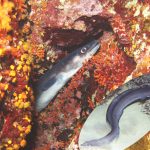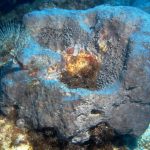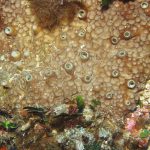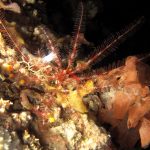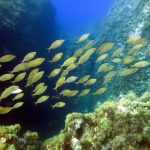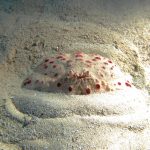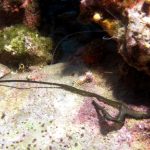Serranus cabrilla, the Comber, is a subtropical marine fish found in the eastern Atlantic Ocean, the Mediterranean Sea, and the Black Sea.
The genus Serranus belongs to the family Serranidae (the family of groupers and sea basses), order Perciformes, class Actinopterygii, phylum Chordata and kingdom Animalia.
Serranus is one of five genera known commonly as the “Atlantic dwarf sea basses”. These fish are hermaphrodites, each individual possessing functional male and female reproductive tissues. When a pair spawns, one fish acts as a male and the other acts as a female. Spawning is seasonal, from February to July with a peak in May and controlled by the moon’s phase.
Serranus cabrilla varies in colour from light brown to dark brown to an intense reddish brown. It has 7 to 9 darker transversal bands on both sides, interrupted by a longitudinal white to yellowish stripe, which extends from the head to the tail.
The Comber has a total of 10 dorsal spines, 13 to 15 dorsal soft rays, 3 anal spines and 7 to 8 anal soft rays.
The habitat of Serranus cabrilla is rocky or sandy sounding-deeps at depths of zero to 200 metres. Although it can grow up to a maximum length of 40 cm, in a normal individual the size can vary from 5 to 25 centimetres.
The Comber is usually solitary or in small groups. It comes out of hiding around dusk to feed on various crustaceans, cephalopods, fishes and worms. Indeed, this fish, together with Serranus scriba (the Painted Comber) tends to give away a well-hidden octopus nest, since it lies in waiting outside the octopus nest to feed on the left-over bits of shellfish.
The photo of this Comber was taken at a depth of 35m outside of the Blue Hole, a natural feature at Dwejra on Gozo’s west coast.
Photos taken by Brian Azzopardi


